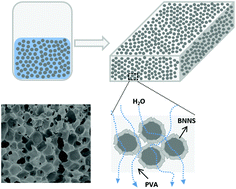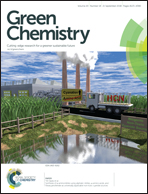Development of novel h-BNNS/PVA porous membranes via Pickering emulsion templating†
Abstract
Polymer-based membranes play an important role in water filtration, in particular in the removal of particles, microorganisms and organic pollutants. Developing a reliable fabrication method for membranes presenting both high flux and good selectivity remains challenging. Polyvinyl alcohol (PVA) is a well-known polymer with promising perspectives due to its specific properties such as nontoxicity, biocompatibility and biodegradability which is of great interest within the context of developing green technologies. Herein, a new strategy using mainly water as a solvent to produce porous membranes based on PVA has been developed using emulsion templating involving hexagonal boron nitride nanosheets (h-BNNS) as a stabilizer. The membranes displaying a pore size around 1 μm show a water permeability over 2000 L m−2 h−1 bar−1 and a rejection efficiency of ∼100%. Moreover, the membranes did not show a significant reduction of their performances after particle filtration. The results indicated that the h-BNNS/PVA porous membranes fabricated via Pickering emulsion templating are good candidates to be used as microfiltration membranes.



 Please wait while we load your content...
Please wait while we load your content...